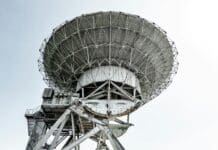This post is also available in:
 עברית (Hebrew)
עברית (Hebrew)
Written by Or Shalom
In Israel, as in any country where technological superiority plays a critical role in maintaining national security and preserving strategic dominance, the relationship between academia and the defense tech industry is not merely an advantage—it is an essential prerequisite for success. Research and development in fields such as artificial intelligence, quantum communications, and cybersecurity serve as the foundation for the security technologies of the future. Furthermore, topics like autonomous drone systems, advanced border protection, and counter-drone defense require continuous innovation, which demands close collaboration between researchers and the defense industry. Academia provides the scientific infrastructure and the ability to lead technological breakthroughs, while the defense sector knows how to apply academic insights to operational solutions. Therefore, fostering deep collaboration between research institutions, the defense industry, high-tech sectors, and the military is not just an opportunity but a strategic necessity for maintaining a technological edge in an ever-changing and dynamic defense environment.
Academia as a Catalyst for Defense Innovation:
The Israeli academia is a central source for advanced technological development, forming the bedrock for security innovation. Leading research institutions like the Weizmann Institute, Technion, and Ben-Gurion University play a pivotal role in creating groundbreaking scientific knowledge, enabling the development of advanced defense capabilities. Research in fields such as artificial intelligence, quantum computing, nanotechnology, and cybersecurity is driving technological revolutions that impact both the defense tech and homeland security industries. For example, AI-based computational models are now used for faster and more accurate intelligence data analysis, quantum communication technologies contribute to the development of encryption systems resistant to cyber-attacks, and more. The process of transferring academic knowledge to defense applications requires tight integration between universities, the defense establishment, and the industry. This dynamic underscores the need for structured collaboration frameworks where defense industries can work closely with academic research teams, reducing the gap between basic research and operational application. The U.S. DARPA agency is a prime example of successful collaboration between academia and the defense industry. Since its inception, DARPA has been a driving force behind technological innovation, investing in groundbreaking research at top universities and transferring it to the defense industry. For example, technologies like GPS, the internet, and operational artificial intelligence began as academic research projects but were rapidly integrated into the defense arena. This model demonstrates how the combination of scientific research and operational applications can lead to significant technological advantages. At the Milipol Exhibition last year, academic research presented potential for groundbreaking security innovations, such as the development of a cyborg—a real insect, measuring 5 centimeters, that is capable of carrying a 15-gram load, including an infrared camera and processor to identify live humans in rubble and transmit their location to operators. [1] This development, made by Nanyang Technological University (NTU) in collaboration with Home Team Science and Technology Agency (HTX) and Klass Engineering and Solutions, showcases the direct transition from scientific research to operational application. [2] Similar to models like DARPA in the U.S. or collaborations between the Technion and the defense industry in Israel, the cyborg insect case underscores the importance of cooperation between universities, governments, and industry in developing innovative defense technologies. In Israel, where technological superiority is a key element of military strength, a similar collaboration could lead to breakthroughs in fields like autonomous drones, electronic warfare systems, and advanced defense measures against emerging threats in the modern battlefield.
The Industry as an Enabler of Application:
While academia leads theoretical research in fields like machine learning, quantum signal processing, and robotic autonomy, the defense industry is adept at taking scientific knowledge and turning it into practical applications. This process requires close collaboration between research institutions, defense organizations, and technological manufacturers to ensure a swift and efficient transition from proof-of-concept to field-deployed technology. A prime example is the development of AI-based threat prediction systems, where leading research labs collaborate with technological intelligence units to develop algorithms for analyzing patterns of hostile activity and providing early warning. Using advanced machine learning and real-time data processing, hostile organizations, drone launches, and attempts to infiltrate sensitive areas can be identified, allowing for fast and accurate responses to dynamic threats. Another model reinforcing the connection between research and application is the establishment of defense technology hubs and joint development programs, enabling startups and researchers to develop prototypes of groundbreaking technologies and deploy them rapidly. Instead of waiting years for academia to complete extensive research, the industry creates fast-paced development environments that are implementation-oriented, where new technologies can be tested in real operational conditions. For instance, advanced anti-drone systems emerged from such collaborations, combining smart radar systems, radio-based communication, and target recognition algorithms for real-time drone detection. One key to success in applying defense technologies is a direct connection between development teams and end-users—the soldiers and operators in the field. In advanced mission-oriented development models, field personnel provide real-time operational requirements, and engineers in defense industries work closely with specialized units to conduct field tests, rapid adjustments, and dynamic technological improvements.
Challenges of Academia in Addressing Field and Operational Unit Needs:
A major challenge in integrating academia into the defense tech industry is the gap between theoretical research and the dynamic operational needs of field personnel and special units. There is not always alignment between the pace of academic research and the immediate operational need in the field. Often, groundbreaking technologies remain at the proof-of-concept stage in academic labs and fail to transition quickly enough into testing, optimization, and operational deployment. To bridge this gap, structured mechanisms for collaboration between academia and operational field units need to be established. Models like operational research labs, where academic research teams work directly with operational forces, can accelerate the transfer of knowledge from the lab to the battlefield. Additionally, structured challenges—such as integrating scientists into operational environments, defense hackathons, and using rapid prototyping models—can enable the defense establishment to dictate practical research challenges that academia will need to address in a focused manner. [3] Models like H4D (Hacking for Defense) in the U.S. or DARPA’s rapid research programs show that close collaboration between researchers and field personnel leads to faster and more precise innovation. One significant challenge in bridging the gap between academia and the defense tech industry is the issue of security clearance. On one hand, academic research thrives in an open environment where ideas, data, and scientific publications are available for discussion and expansion. On the other hand, defense industries and intelligence agencies must maintain confidentiality to prevent the leakage of advanced technologies to hostile entities. This gap results in many research projects with security potential being underutilized or the industry being unable to share relevant information with researchers. Therefore, the following mechanisms, which are used around the world, could be applied:
- Creating “classified research tracks” within academia—this model exists in the U.S. and the UK, where certified researchers are granted limited access to classified information in dedicated defense research labs. Leading universities like MIT and Stanford operate unique frameworks for classified defense research, under tight governmental and industrial oversight, ensuring critical information remains controlled while preserving the academic research environment.
- Limited knowledge sharing: By defining research problems generically, academia can find solutions without being exposed to classified details.
- Strengthening monitoring and control systems for scientific publications: This model is implemented at DARPA, where all classified research undergoes stringent screening before public release, balancing research openness with the protection of security interests.
- Closed defense innovation hubs: These provide secure development spaces where startups, researchers, and engineers can develop defense technologies under tight security, preventing information leaks. These hubs facilitate controlled collaboration between field personnel, researchers, and engineers while maintaining strict security protocols.
The close connection between the defense industry and research institutions not only enhances Israel’s technological advantage but also creates an innovative ecosystem where scientists, engineers, and field personnel work together to bring next-generation defense technologies to the battlefield quickly and precisely. Success, of course, depends on appropriate educational programs that are influenced by needs (research directions) while also addressing, solving, and optimizing field activities in relatively short timeframes—especially as threats and technologies evolve rapidly.
The author is a security, cyber and HLS technology expert and consultant to government ministries and defense industries. He holds a master’s degree, as well as civil and national qualifications in the realm of HLS and Cyber Security. He has experience in consultation and business development for security companies and groups in matters of planning and building defense, innovation and security technology, exercises, and training in security and cyber.
[1] https://i-hls.com/he/archives/123381
[2] https://www.straitstimes.com/singapore/singapore-s-cyborg-cockroaches-on-display-at-homeland-security-event-at-mbs
[3] https://www.youtube.com/watch?v=-TDn25K-Jh4


























